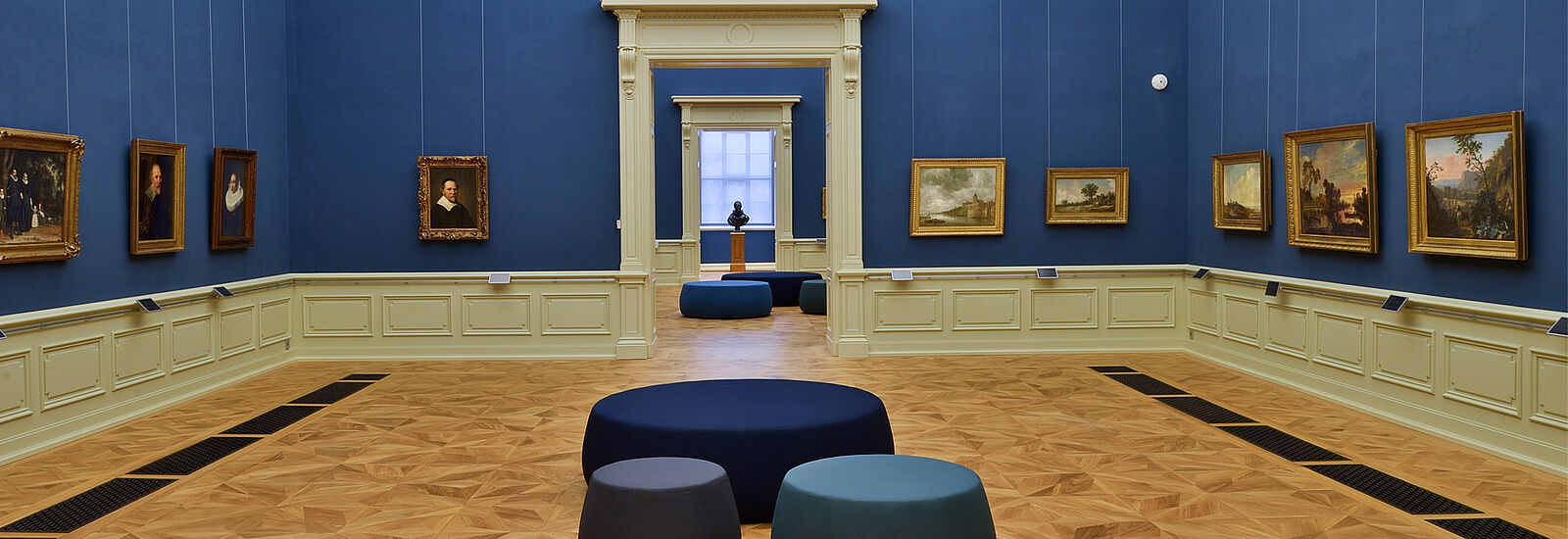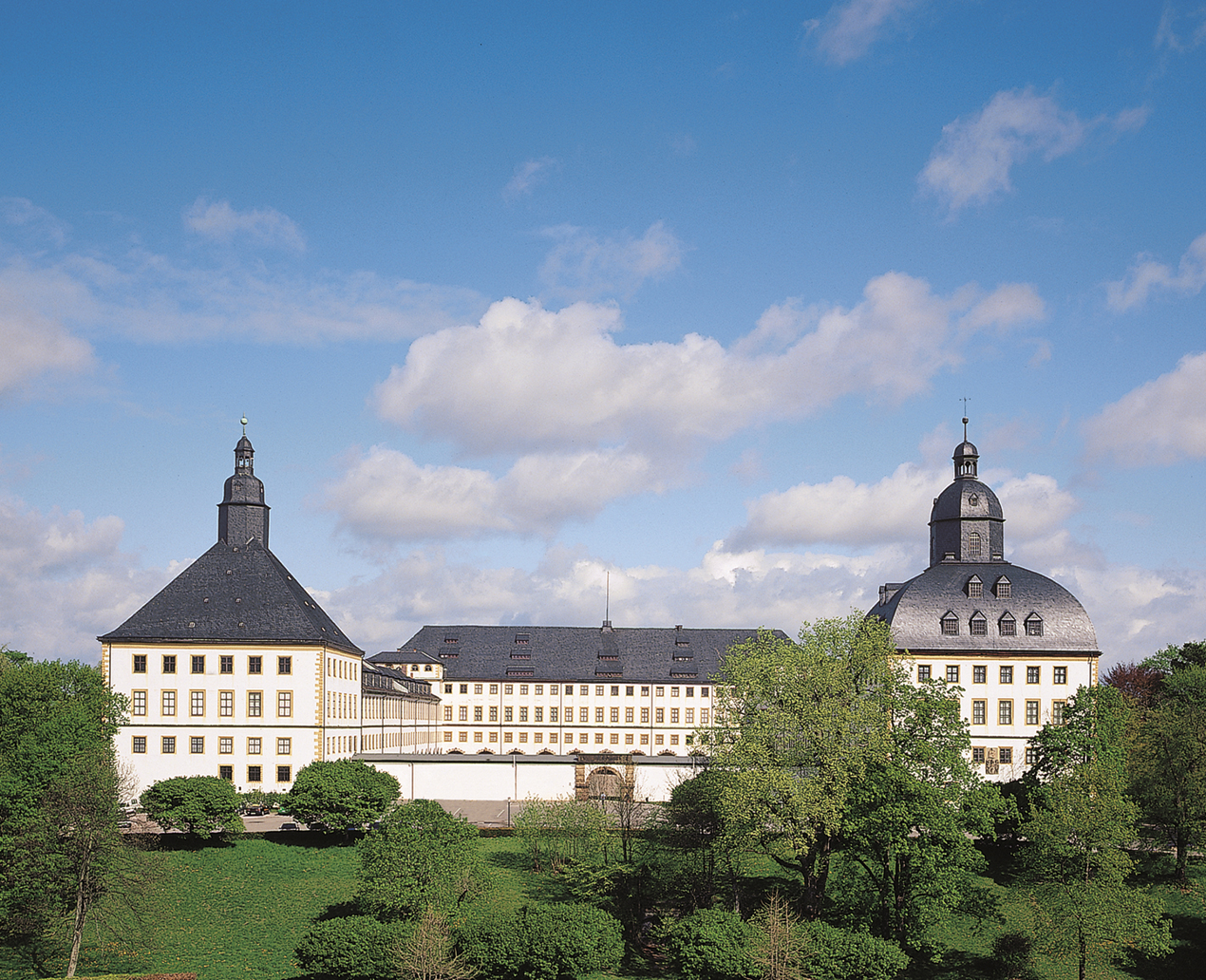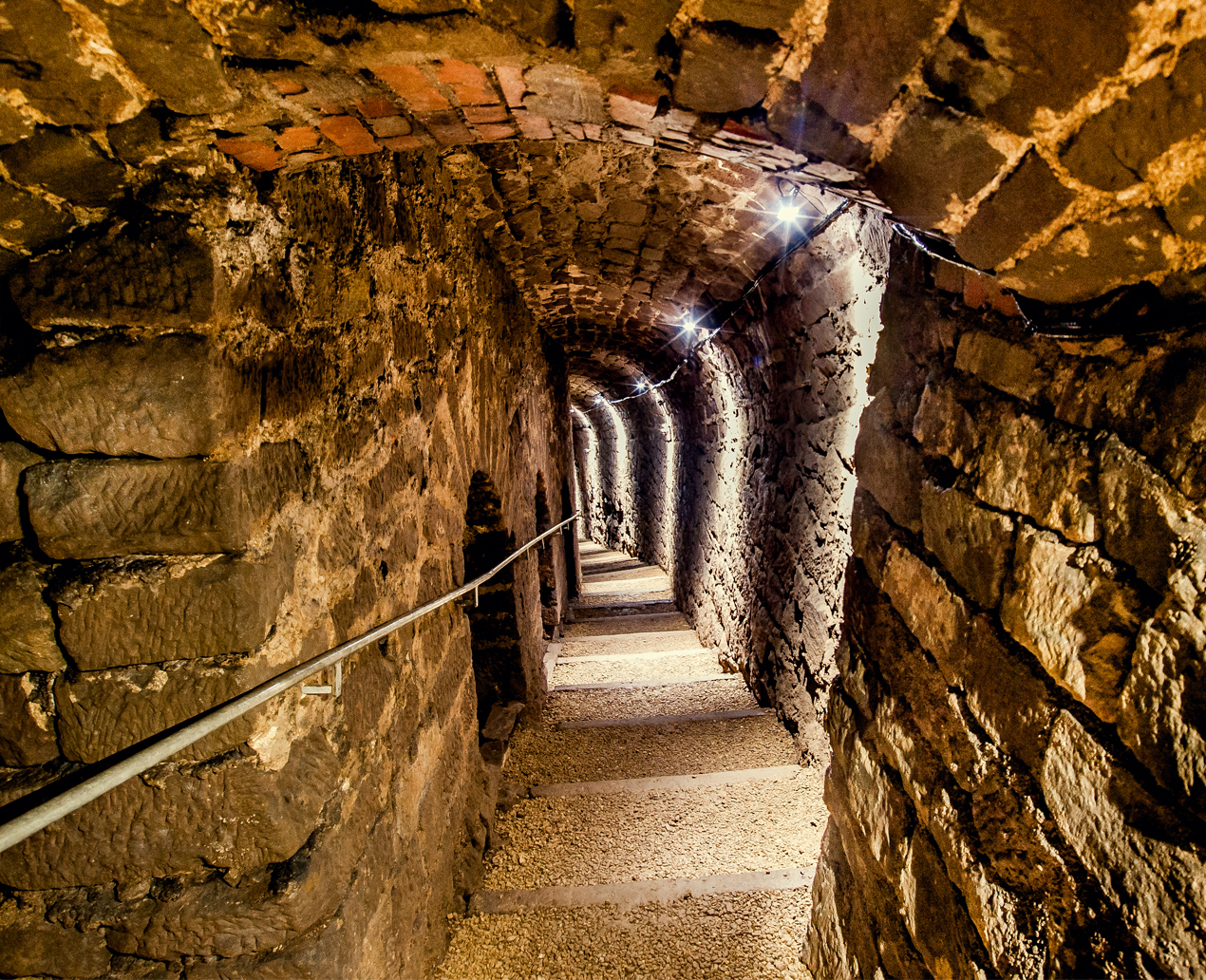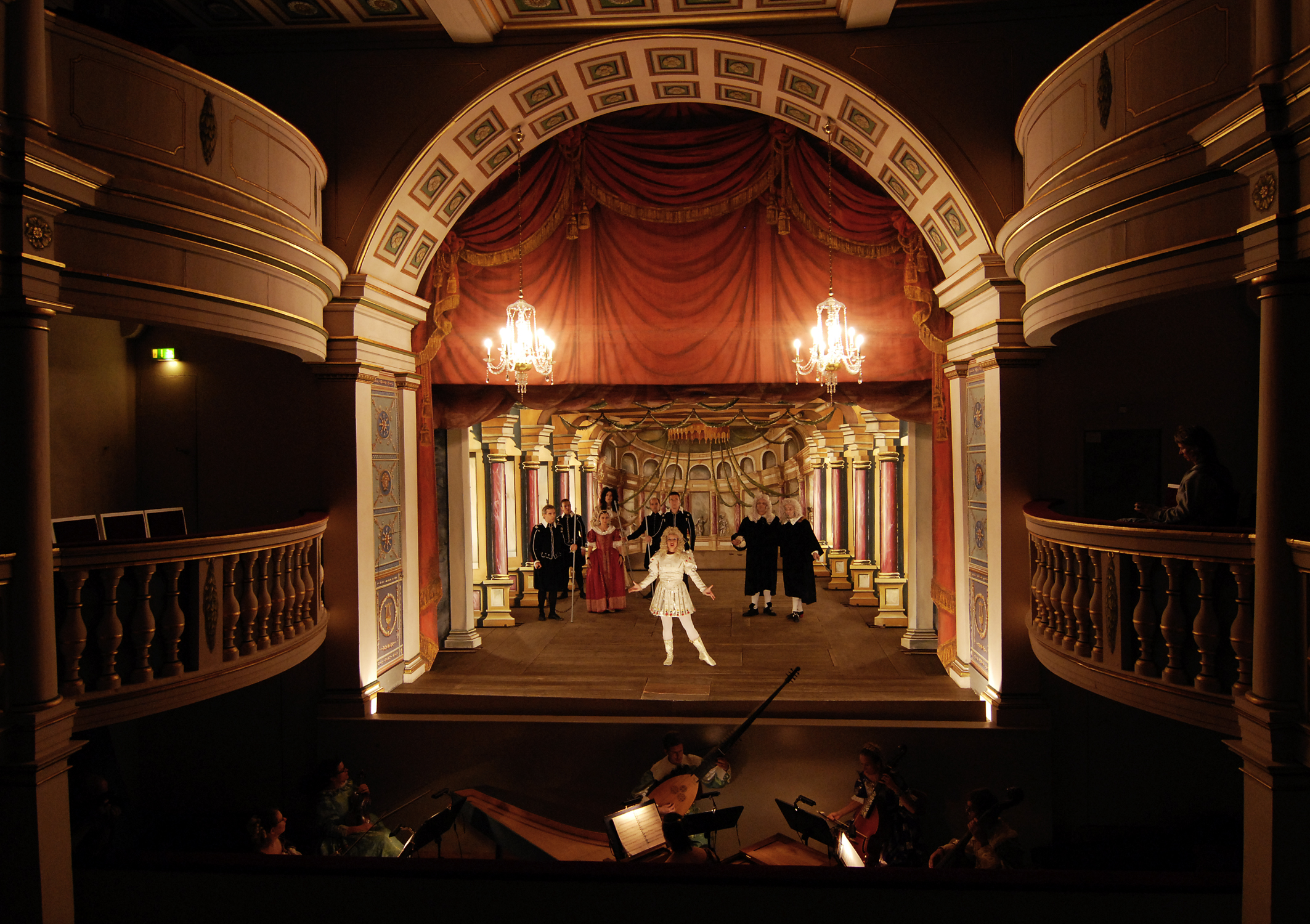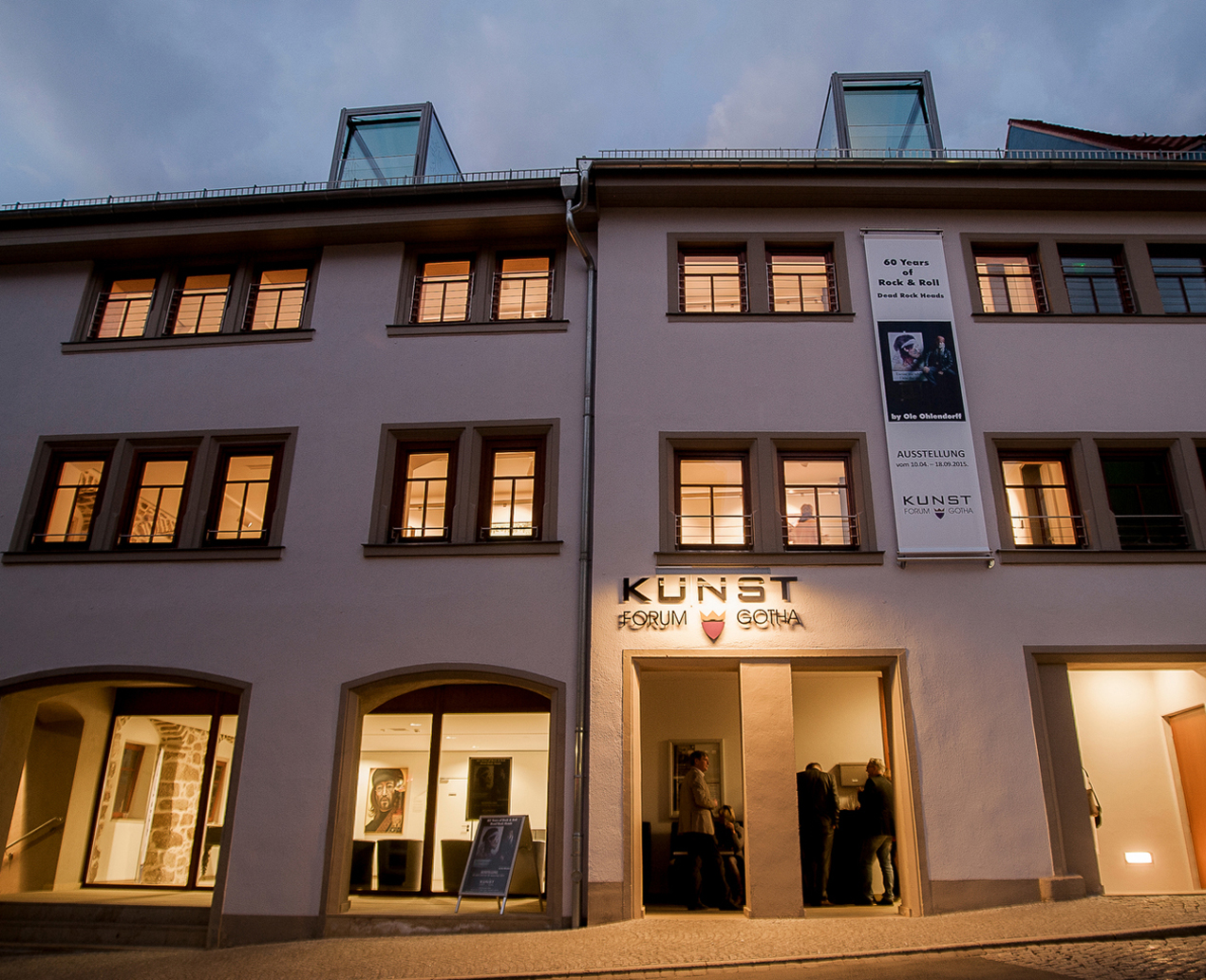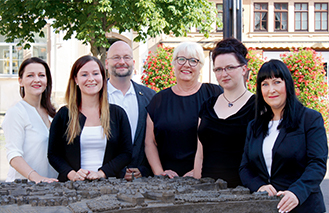Das Barocke Universum
Friedenstein Palace
Friedenstein Palace towers over the city with its differently shaped corner towers as a landmark that can be seen from afar. Ernest the Pious laid the foundation stone for the palace that is considered to be a prime example of Early Baroque architecture among the ruins of Grimmenstein Castle in 1643 as the Thirty Years’ War was coming to an end.
The monumental fortifications around the palace were razed at the end of the 18th century as they were no longer required – Friedenstein, which means “rock of peace”, lived up to its name and never had to suffer destruction. This fact is interesting for architecture enthusiasts but also of immense importance for the palace’s extensive collections. They are exhibited in the palace’s three museums and the Ducal Museum south of the palace quadrangle today.
Duke Ernest II surrounded his residence with a stunning English style landscaped park instead of the fortifications – the first of its kind on the European mainland. However, Gotha’s palace park doesn’t just fascinate due to its harmonious atmosphere but also provides quite a bit to explore with the Baroque orangery garden and the underground casemates.
Use the combination ticket from the Ducal Museum Gotha to get cheaper entry to the KunstForum Gotha.
Who can I ask?
Your contact
Friedenstein Palace
Schlossplatz 1, 99867 Gotha
Phone: +49 (0) 36 21 / 823 40
Museum opening hours at Friedenstein Palace:
April – October: 10:00 a.m. – 05:00 p.m.
November – March: 10:00 a.m. – 04:00 p.m.
Closed on Mondays; but open on public holidays

